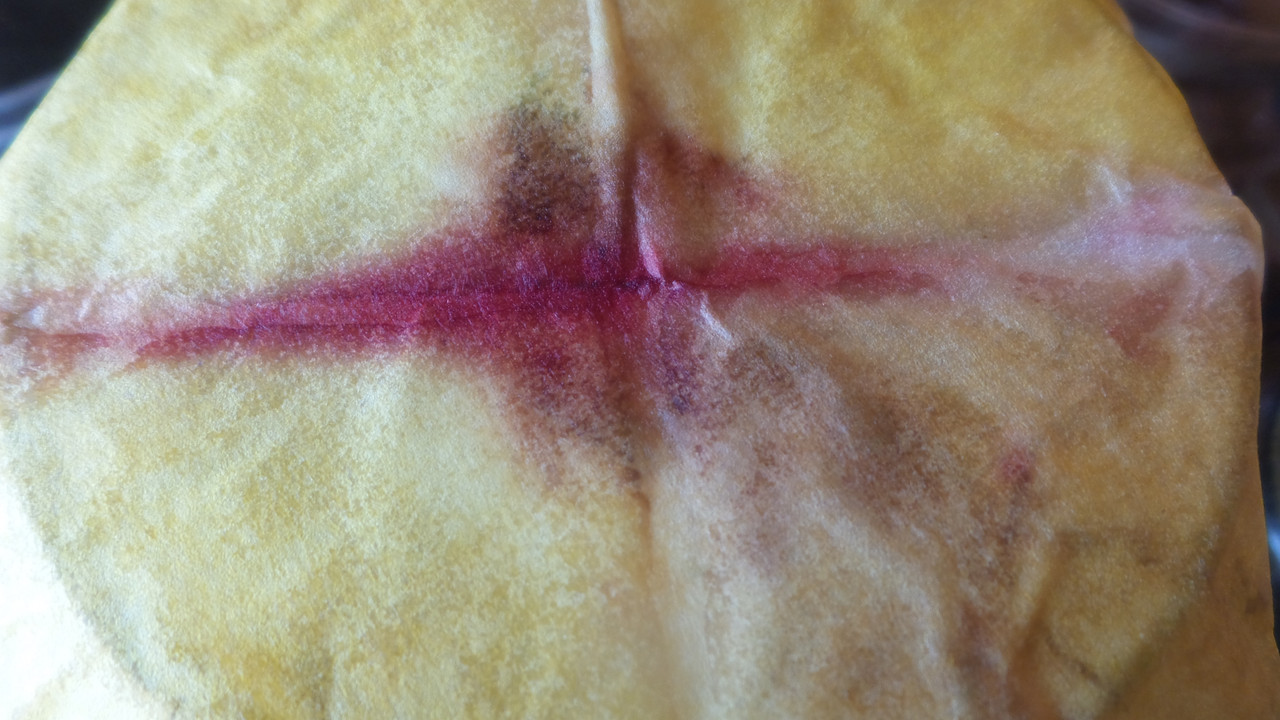Harold_V said:In my years in the lab, I don't recall ever seeing a platinum reaction that was red. The best description I can offer is that it will look like coffee, but if there is precious little in solution, it can be yellow, ranging down through a deep dark brown as the solution is more concentrated.eeTHr said:In the forum handbook it lists stannous chloride test colors which are different than Hoke states.
The handbook says a platinum solution will show red, and Hoke says it will range from deep yellow to brown depending on strength.
Palladium is a bit of a chameleon. It can display all of those colors, and under very strange circumstances can be confused with a dilute gold solution. The big difference is it doesn't leave a purple stain on your spot plate (which I advise). If you have even a remote question about the presence of palladium, or if you have palladium in solution with gold and or platinum, it's wise to do a test with DMG, which is conclusive. Even traces of palladium will yield a bright canary yellow precipitate.The handbook has palladium as showing deep yellow to brown, and Hoke lists it as deep yellow at first then turning to blue-green.
There's more to consider. If you have more than one metal in solution, it often pays to add a crystal of ferrous sulfate to the test drop you have placed in your spot plate (that's why I recommend a spot plate) to precipitate the gold. You can then test the solution for the presence of other elements of concern, using stannous chloride. Gold so precipitated will come down as a fine sheet of gold, or in minute particles that are anywhere from golden color to dark brown. The resulting tests are then much easier to read.
My advice to you is to obtain a grain or two of each of these metals and prepare standard solutions. If memory serves, Hoke provides guidelines. By doing so, you can witness the color reactions in person, so you can understand what you're seeing when you are testing an unknown solution. Testing is very important to achieving success.
Harold
I'm wondering where to get tin powder and what do you use to test( the test paper)












































